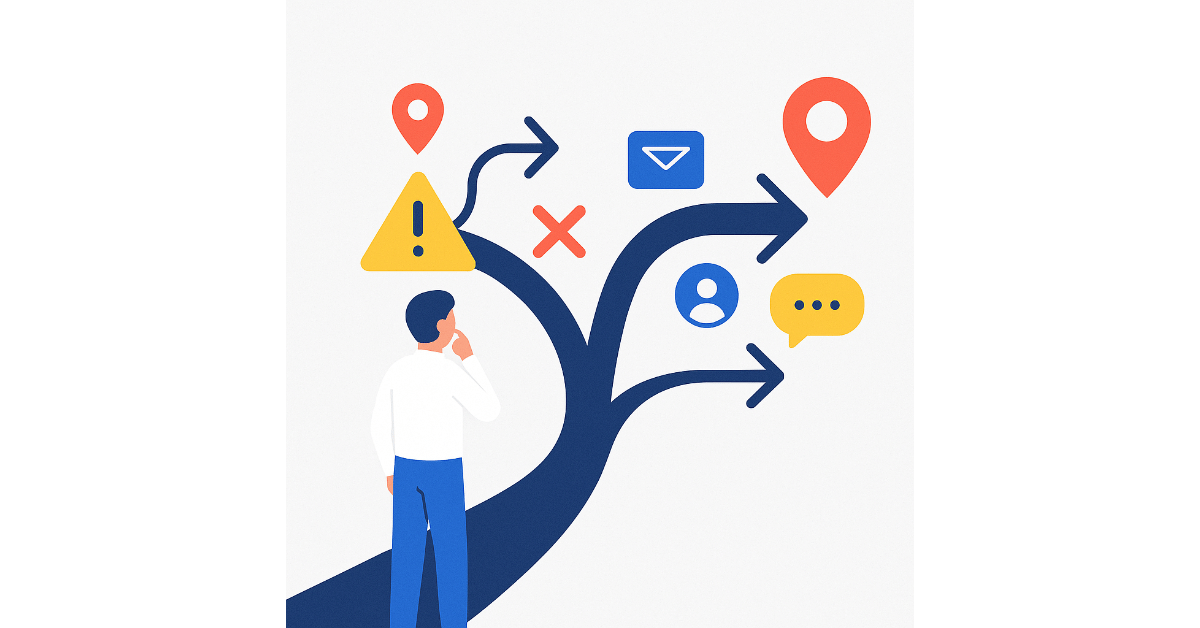6 Common Lifecycle Marketing Mistakes (and What to Do Instead)
When done right, lifecycle marketing can feel like magic. Emails arrive just when they should. Customers engage. Revenue grows. But behind the scenes, that kind of precision doesn't happen by accident. It comes from strategy, testing, and thoughtful execution.
Unfortunately, many brands dive into lifecycle programs without the foundation needed to make them succeed. The result? Automation that misses the mark, campaigns that underperform, and opportunities left on the table.
If you're launching (or relaunching) your lifecycle marketing efforts, avoid these six common pitfalls. And don’t worry, we won’t just flag the mistakes. We’ll show you what to do instead.
1. Skipping the Strategy in the Rush to Launch
It’s tempting to jump straight into the tools and start building automations. After all, platforms like Klaviyo, Iterable, and HubSpot make it easy to spin up flows in minutes. But automation without strategy is just noise.
Before you activate a single email or SMS, ask: What are the most important customer moments in our lifecycle? What does success look like? Where are we losing people now? A thoughtful marketing automation strategy starts with questions like these, not subject lines.
Instead, map the customer journey first. Define key lifecycle stages: onboarding, consideration, conversion, repeat purchase, and reactivation. Align your messages with the needs, objections, and motivations at each stage. Only then should you build your automations.
2. Using the Same Message for Everyone
One-size-fits-all doesn’t work in lifecycle marketing. A new subscriber doesn’t need the same information as a loyal repeat buyer. Yet too many brands recycle the same message across every audience segment.
Instead, use your customer data to personalize. Start small: separate first-time purchasers from repeat buyers. Tailor the welcome series to the source (email signup vs. referral). Vary product recommendations based on browsing history. Even simple segmentation goes a long way to improve relevance and results.
If you’re working with an email marketing agency or lifecycle marketing agency, they can help you implement dynamic content blocks, personalized timing, and trigger-based journeys that treat each subscriber like an individual.
3. Over-Automating Without Maintaining
Automation isn’t set-it-and-forget-it. But many businesses treat it that way. They launch a few flows, check a box, and never revisit them. Months later, the copy is outdated, the offers have expired, and the journey no longer aligns with the brand.
Lifecycle marketing requires ongoing attention. Set a cadence to audit your automations. Quarterly reviews are a smart starting point. Check key performance indicators: open rates, click-through rates, conversion rates, and unsubscribe trends. Then optimize.
Use A/B tests to refine subject lines, CTAs, product suggestions, and timing. Update content seasonally. Retire whatever is no longer working. Effective email campaign management is never passive.
4. Ignoring the Data (or Tracking the Wrong Metrics)
Marketing automation tools give you endless analytics. But more data doesn’t always mean better decisions. Too often, teams focus on vanity metrics: open rates, list size, or impressions, without looking at what actually drives business impact.
Shift your focus to meaningful KPIs: revenue per send, retention rate, average order value, and customer lifetime value. These are the numbers that measure true progress in your customer lifecycle.
If you’re not confident in your analytics setup, consider working with email marketing experts. They can help you establish benchmarks, monitor results, and connect marketing performance to bottom-line impact.
5. Treating Automation as a Substitute for Connection
Yes, lifecycle programs are automated. But the best ones still feel human. They read like a helpful concierge, not a cold algorithm. Too many brands lose their voice in automation, or worse, default to generic, robotic messages.
Remember: automation is a delivery system. It gets your message to the right person at the right time. But the message still needs to be thoughtful, empathetic, and aligned with your brand.
Use conversational copy. Show personality. Anticipate customer concerns. Celebrate milestones. If someone just joined your membership program, congratulate them. If they haven’t purchased in a while, show that you noticed. These small touches build trust and loyalty.
6. Launching Too Many Programs at Once
Ambitious brands want it all: a welcome series, cart recovery, win-back, loyalty, post-purchase, reviews, referrals. But trying to launch everything at once often leads to half-built flows and missed deadlines.
Start with the automations that have the most impact early. For most businesses, that means:
Welcome Series
Abandoned Cart
Post-Purchase Follow-Up
Re-engagement/Win-Back
Once those are running and optimized, expand from there. Introduce review requests, loyalty milestones, or educational journeys. Prioritize based on business goals and customer behavior data. We like to use a framework of prioritizing based on the highest expected impact for the effort.
If you're working with a partner that offers marketing automation services, they should help you prioritize your roadmap. You don’t need everything at once, you need the right things at the right time.
Final Thoughts: Build to Evolve, Not Just Launch
Launching a lifecycle marketing program is a major milestone. But the real success comes from what happens after launch: iteration, refinement, and growth.
Stay curious. Stay engaged. Review your automations regularly. Talk to your customers. Track what matters. Improve what doesn't. Whether you're a startup or scaling brand, evolving your lifecycle programs is how you turn first-time customers into loyal advocates.
And remember: you don’t have to go it alone. The right lifecycle marketing agency or email marketing experts can help you build a smart foundation, avoid common traps, and grow faster with confidence.

